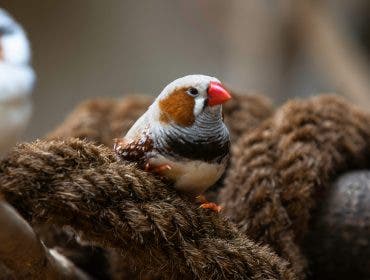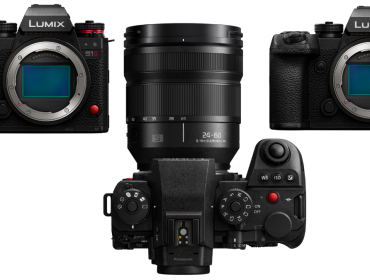No one denies that kit lenses are extremely beneficial when you start photography. You get an affordable, compatible lens without having to know anything about lenses. Additionally, kit lenses are versatile, enabling you to explore a wide range of photographic genres and aesthetics. However, once you understand how photo gear works and get a grip on your artistic style and workflow, kit lenses become obsolete. You want something better, more suited to you, and much more creative. To top it off, you still want an affordable lens.
Rest assured, we have you covered. Check out the following affordable lenses that expand your creativity without overwhelming your budget.
Affordable Wide-Angle Lenses
If you decide on landscape, real estate, nature, or street photography, you most likely want a fast, accurate, and adaptable wide-angle lens. You are adamant about having a wide maximum aperture to take sharp photos, regardless of the lighting conditions, and appreciate portability much more than other photographers. After all, you are always on the move and shoot in a location, not in a studio. For this reason, you would like to benefit from built-in image stabilization because sometimes using a tripod is not an option. Kit lenses have let you down here, but there are plenty of outstanding wide-angle lenses out there. For instance:
Canon RF 16mm f/2.8 STM Lens
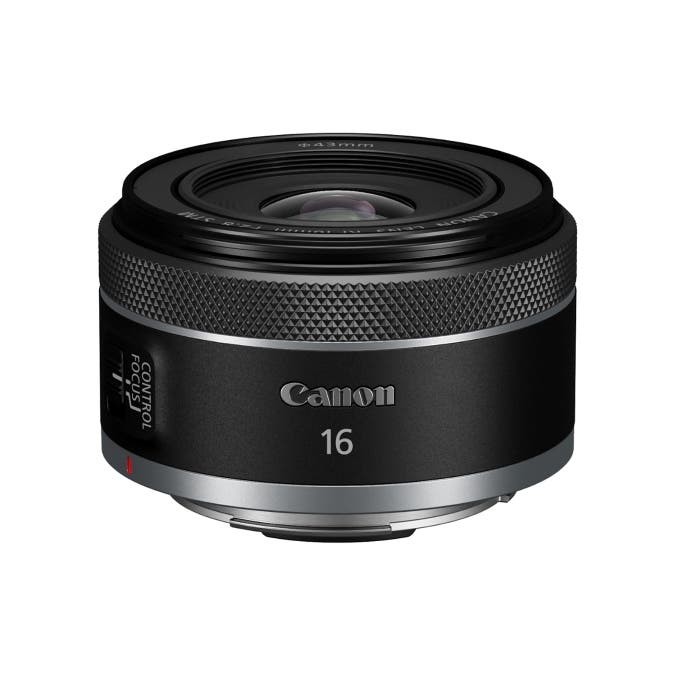
The RF 16mm f/2.8 STM is compatible with the Canon EOS R mirrorless camera series. It provides an ultra-wide angle of view, a wide maximum aperture, a short minimum focusing distance (5.11 inches (13 cm)), and a compact and lightweight body (0.36 lbs (165g)). The lens features 9 elements in 7 groups with one aspherical element and seven aperture blades, delivering the optical quality you need. Any landscape and nature photographer would love to have it in their pocket.
The lens features a stepping motor autofocus system and a control/focusing ring, which make it ideal for traveling, hiking, vlogging, street photography, and any other situation where speed and discretion are essential, too. And because EOS R cameras have 5-axis built-in image stabilization, you don’t have to worry about shooting handheld.
Nikon 20mm f/1.8G ED AF-S NIKKOR Lens
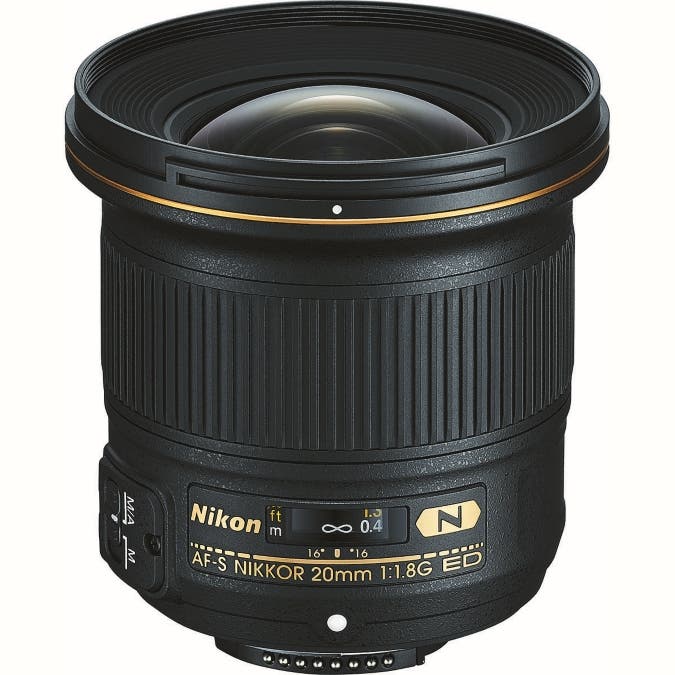
If you use a Nikon DSLR camera with an F-Mount (e.g., D3500, D5600, D850, etc.), the Nikon 20mm f/1.8G ED AF-S NIKKOR lens is most likely the only wide-angle lens you need. It performs very well in low lighting conditions due to its ultra-wide f/1.8 maximum aperture and features an advanced optical design with two aspherical and two extra-low dispersion elements for outstanding sharpness with no spherical or chromatic aberrations. The Nano Crystal and Super Integrated coatings ensure optimal color accuracy and no flares or ghosting. And the seven-blade, rounded diaphragm produces a natural-looking bokeh when you create a narrow depth of field.
In addition, the lens includes a smooth Silent Wave Motor autofocus system, can focus as close as 7.92 inches (20 cm), and weighs only 0.79 lbs (357.2g).
Affordable Telephoto Lenses
Telephoto lenses are a must in wildlife, bird, sports, documentary, and portrait photography. The focal length range varies for each genre, but still, none of them is achievable with a kit lens. Telephoto lenses tend to be expensive, heavy, bulky, and more demanding in terms of image stabilization and lighting conditions. Nevertheless, you can find third-party telephoto lenses compatible with your camera, both zoom and prime ones, that meet your artistic and technical requirements and stay within your budget. Our favorites are:
Sigma 100-400mm f/5-6.3 DG DN OS Contemporary Lens
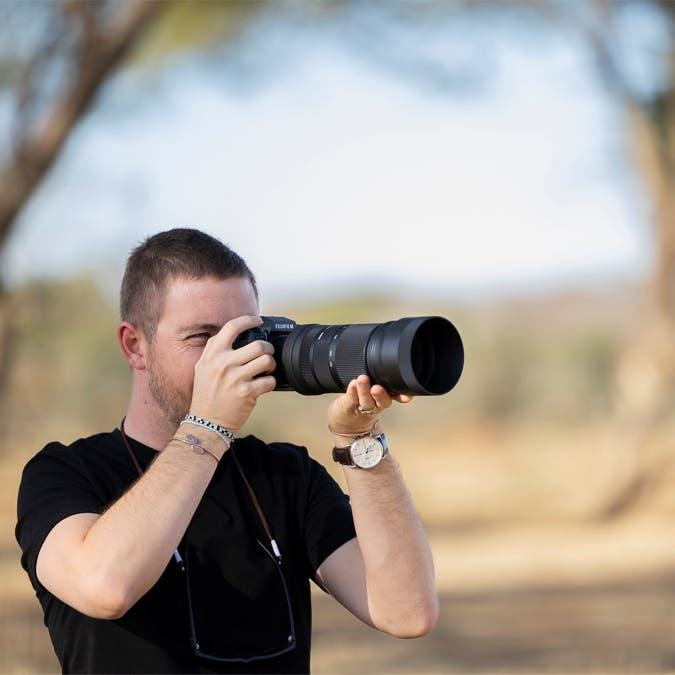
Available for the Sony E mount, Fujifilm X Mount, and L-Mount cameras, the Sigma 100-400mm f5-6.3 DG DN OS offers a generous ultra-telephoto range of focal lengths, the 35mm equivalent of 150-600mm. It covers every situation, from wildlife and nature to sports and events, and remains quite lightweight for its range (2.5 lbs (1.13kg)). In addition, it features built-in image stabilization, an advanced autofocus system, a smart zoom ring with a push/pull mechanism, and a dust and splash-resistant structure.
The lens’s optical performance comes from its design: 22 elements in 16 groups with FLD (“F” Low Dispersion) and four SLD (Special Low Dispersion) to minimize aberrations and distortions and SIGMA’s Super Multi-Layer Coating to reduce ghosting and flare, a 9-blade rounded diaphragm for smooth, natural-looking bokeh, and wide maximum aperture f/5 at 100mm and f/6.3 at 400mm.
Tokina SZX 400mm f/8 Reflex MF Lens
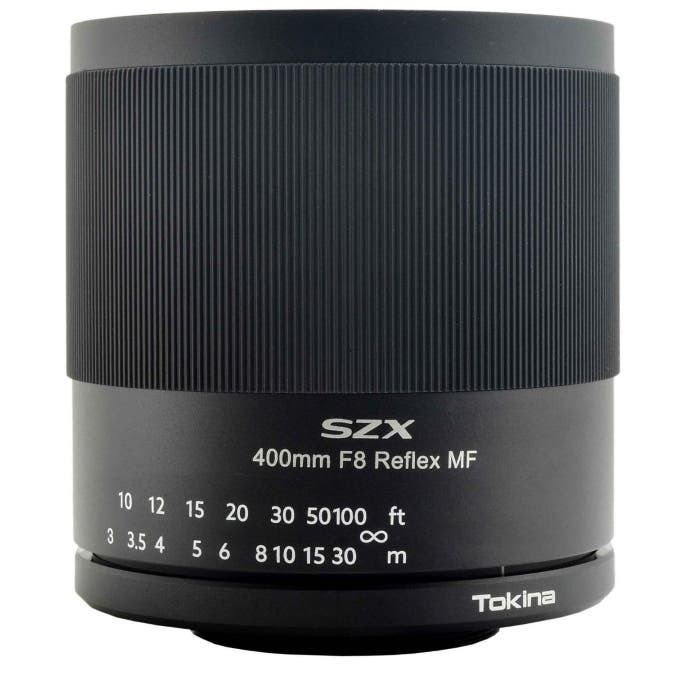
The SZX 400mm f/8 Reflex MF lens from Tokina is available for Canon EF-Mount, Nikon F-Mount, and T-Mount cameras. It is a super telephoto prime lens with an outstanding 400mm focal length, ideal for wildlife, bird, and outdoor photography of any type. The lens is designed to deliver optimal optical performance while still being ergonomic, compact, and portable. It weighs only 0.78 lbs (355g).
In terms of optical design, the SZX 400mm f8 Reflex MF features 6 elements in 5 groups, a constant f/8 aperture, a special donut-shaped bokeh, and a multi-layer anti-reflection coating. Due to its minimum focusing distance (3.77ft (1.15m)), the lens offers macro shooting capabilities, exhibiting a macro magnification of 1:2.5. To reduce the risk of blurring your photos, it features advanced built-in multi-axis image stabilization systems and multiple focus assist functions.
Affordable Macro Lenses
While you can get a close-up by making the most out of your lens’s minimum focusing distance, if you want to take professional macro shots, you need a dedicated macro lens. In this case, what matters the most is the magnification factor, which has to be at least 1:1. You also want to consider the focal length, the maximum aperture, the minimum focusing distance, the quality of the bokeh effect, and the focusing precision. Check out these macro lenses:
Nikon NIKKOR Z MC 105mm f/2.8 VR S Lens
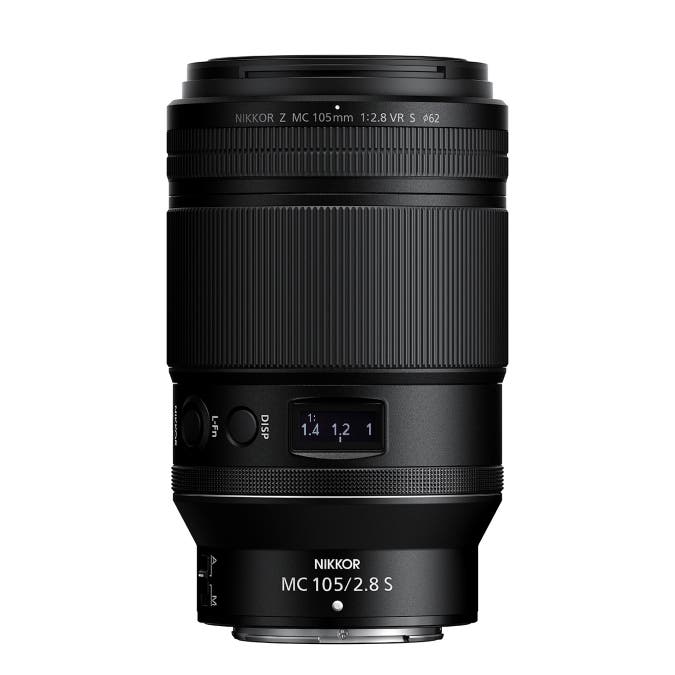
The NIKKOR Z MC 105mm f/2.8 VR S is a good choice for macro photography because it provides life-size captures with a 1:1 reproduction ratio, mixed with the comfort of shooting with a mid-telephoto lens. You can capture the tiniest details without crowding the subject, a huge advantage when photographing insects. Although if you want, you can get as close as 0.96 ft. (0.29m).
In addition, the lens features a generous f/2.8 maximum aperture, built-in image stabilization with 4.5-stop vibration reduction, and an advanced multi-focus system that eliminates all distortions and aberrations and delivers edge-to-edge sharpness. It creates a soft, beautiful bokeh effect, but when you want something in focus, you can rely on autofocus range constraining, focus shift mode, and other settings to keep you on target.
IRIX 150mm f/2.8 Dragonfly Macro Lens IRXF15028CN
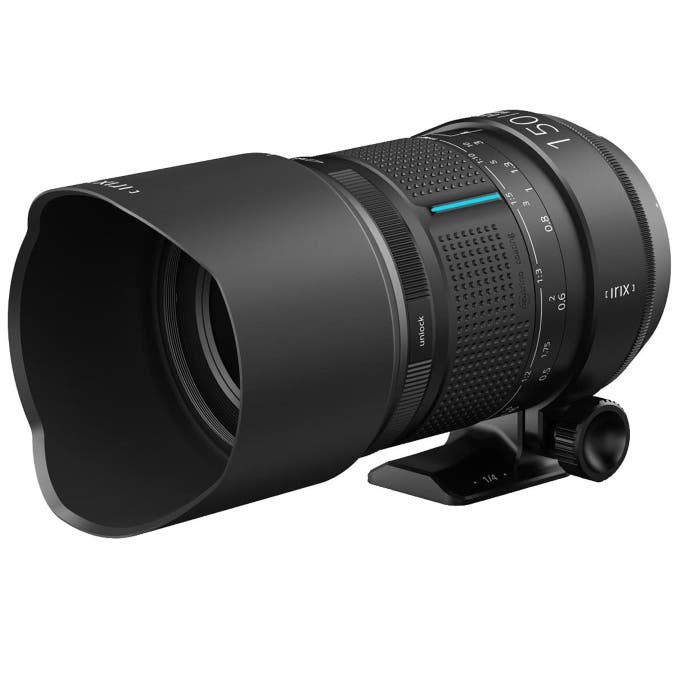
The IRIX 150mm f/2.8 Dragonfly is a third-party macro lens available for Canon EF-Mount, Nikon-F-Mount, and Pentax K-Mount cameras. Its versatile focal length recommends it not only for macro shots but also for other nature photos. However, it is a macro lens and provides the 1:1 scale of reproduction you need for photographing the tiniest subjects.
The wide maximum aperture, f/2.8, is extremely useful for shooting in low lighting conditions. The IRIX 150mm f/2.8 Dragonfly has 12 elements in 9 groups and a rounded 11-blade diaphragm for a beautiful background blur.
You can get as close as 1.13 ft. (34.5cm) to your subject and don’t have to worry about ruining the lens when you shoot close to the ground, as it is moisture- and dust-resistant. Due to the internal focusing system, the lens preserves its geometry while focusing, which means even less disturbance for your subject.
Bonus: The Power of a 50mm Lens
Most kit lenses include the 50mm focal length in their zoom range. So, why would you need a prime 50mm lens to expand your creativity? Well, Henri Cartier-Bresson preferred it because it lets the photo “breathe” and provides a certain feel that other focal lengths don’t have. The 50mm lens certainly suits street photography, but also nature shots, environmental portraits, and landscapes. Still, why purchase a prime lens when your zoom kit lens already covers the 50mm focal length? The main reason is quality.
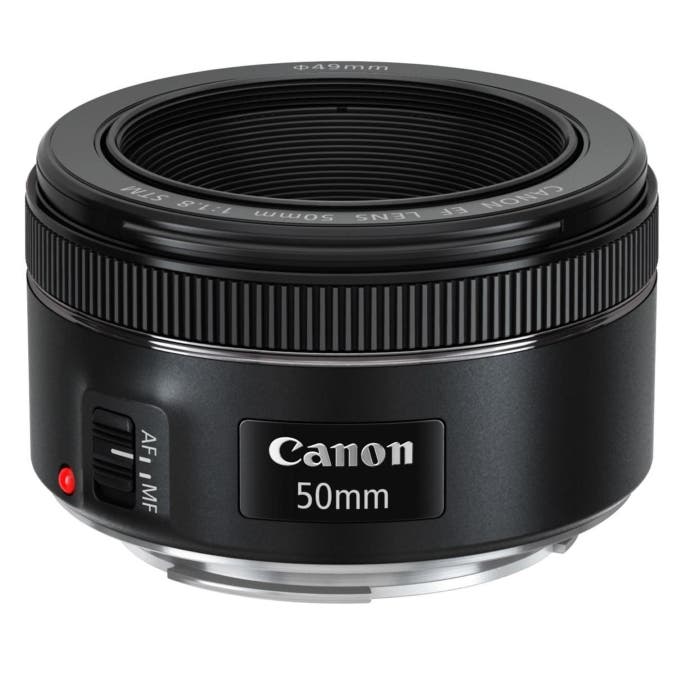
A prime 50mm lens, such as the Canon EF 50mm f/1.8 STM, delivers exquisite sharpness and color accuracy. Its optical design is flawless and includes a wide maximum aperture (f/1.8), advanced coatings for eliminating ghosting and flare, a rounded seven-blade diaphragm for impressive out-of-focus quality, and a swift autofocus system. You’ll notice the difference in terms of contrast, brightness, and color fidelity.
At the same time, a prime 50mm lens is versatile. The minimum focusing distance is short enough to take close-ups (13.8 inches (35cm) for the Canon EF 50mm f/1.8 STM), while the focal length offers a relatively wide field of view. However, the lens can’t do everything for you, and that’s just another reason to use it. It encourages you to get creative, improvise, change the setup to find the best shooting angle, interact with the subject, and think outside the box.
Final Thoughts on Affordable Lenses
Finding the lens following the kit lens is the next step towards becoming a skilled photographer. At this stage, you know for sure if you want a wide-angle, telephoto, or macro lens, if you work better with a prime or zoom lens, and how much you can afford to spend to get the quality you need. And if you favored the budget over quality when buying the kit lens, that’s not the case anymore. This lens will boost your creativity, help you get to a professional level, and be the long-term companion you seek.





